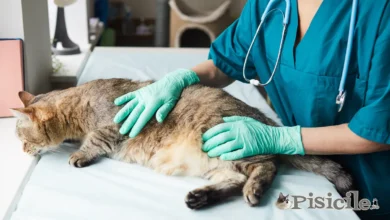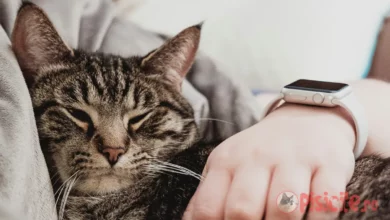
Similar to humans, arthritis in cats is a disease associated with aging and affects between 70% and 90% of cats over 12 years of age. Also known as degenerative joint disease or osteoarthritis, it is a chronic, painful and progressive condition that affects the joints of cats.
The development of arthritis is a slow process that spans several years, during which changes occur in the joints. Cartilage, which protects and cushions the joint, gradually breaks down, leaving the bones to rub abnormally against each other, leading to inflammation, swelling and pain.
The most commonly affected joints are the spine, hips, knees and elbows, although any joint can be affected. As a progressive disease, symptoms worsen over time, and cats with arthritis may experience movement difficulties and lameness.
Although arthritis in cats does not have a breed or sex predisposition, it is often considered an age-related condition, as stated in the introduction.
Subject
Symptoms of arthritis in cats
Some cats with arthritis may not show obvious signs of distress, being adept at hiding their pain. However, common symptoms include limping, joint swelling and loss of muscle mass. Other subtle signs may be a reduced ability to jump or play, decreased energy levels, and difficulty maintaining balance when falling.
Cats with arthritis may also have trouble grooming their fur, making them appear more unkempt. Some owners notice changes in the cat's posture or a reluctance to use the litter box due to the discomfort caused by the pain.
It is important to note that these symptoms develop gradually, not suddenly.
Causes of arthritis in cats
Arthritis in cats can occur without a clear cause, although genetic factors may play a role. It is usually associated with aging, but can also be triggered by a joint injury. These injuries, even minor ones, can include:
- Ligament injuries
- Autoimmune diseases such as immune-mediated non-erosive polyarthritis
- Tick-borne diseases such as Lyme disease
- Direct trauma (eg car accidents, falls)
- Infections
- Congenital defects
Arthritis progresses due to the release of enzymes that break down cartilage and collagen, which causes further inflammation.
Diagnosing arthritis in cats
Veterinarians can suspect arthritis in cats based on a physical exam, but further investigation is required for a definite diagnosis. Many cats are asymptomatic and are diagnosed incidentally through x-rays.
Signs identified on physical examination may include limping, changes in gait or posture, swollen or thickened joints, pain on palpation, and decreased joint mobility. X-rays are used to identify structural changes in the bones and joints, such as joint distension, bony growths, and narrowing of the joint space.
Treatment
Arthritis is a common condition in cats, but there are many options to relieve their pain and keep them active. With proper management, disease progression can be slowed and cats can lead active and comfortable lives. A multifaceted approach that includes special diets, medications, supplements, and therapies provides better results.
A major factor that worsens arthritis is obesity, as it puts extra pressure on the joints. Reducing your cat's weight is an essential step in relieving stress on the joints. Additionally, your veterinarian may recommend supplements or medications to manage pain and inflammation.
Recovery and lifestyle
Arthritis in cats is not reversible, but treatments can slow the progression of the disease and significantly improve quality of life. It is important to monitor your cat closely, as many animals show few clinical signs of arthritis. Most cats diagnosed with arthritis are over 10 years old, but symptoms can appear earlier, starting as early as 6 years old.
Without treatment, arthritis can lead to severe and painful disease, so regular veterinary consultation is highly recommended.
Read also: Obesity in cats. The main risks for the cat's health.
How to prevent arthritis in cats
To prevent arthritis in cats, it is important to keep your cat's weight at an optimal level. If your cat is overweight, follow a weight loss program under your veterinarian's supervision. It is also recommended to discuss the use of cartilage-protecting medications and supplements early on to slow the progression of the disease.



